Food might just be the best storyteller there is. One bite can take you back in time, remind you of family dinners, or spark curiosity about a place you’ve never been. Whether you’re cooking your favorite childhood comfort meal or trying something totally new, food has this amazing way of connecting people.
At Remitly, we understand that food is about more than staying full. Moving to a new country comes with a lot of change, but a familiar recipe can make anywhere feel like home. Maybe it’s the way your mom made rice, or a dish you’ve discovered that’s now part of your story. In this guide, we’ll explore some of the world’s most iconic national dishes that carry stories of family, culture, tradition, and civic pride.
Western Europe: where taste meets tradition
From seaside villages to bustling city cafés, Europe’s food culture is as diverse as its languages.
Italy: Ragù alla bolognese
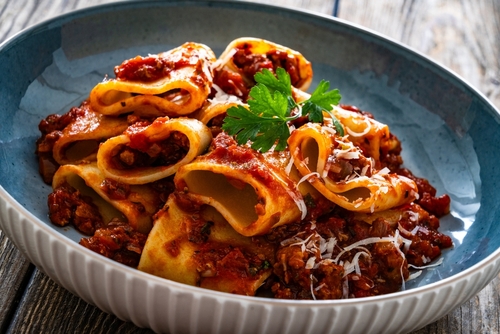
Some might think that pizza is the Italian national dish. But if comfort had a flavor, in Italy it would taste like ragù alla bolognese. This slow-cooked meat sauce from Bologna is made with minced beef, tomatoes, and a splash of wine. It’s simmered for hours until it becomes silky and full of depth. Served over fresh tagliatelle, it’s the kind of meal that brings everyone to the table.
France: Pot-au-feu

There’s cozy, then there’s pot-au-feu. This hearty stew of braised beef, root vegetables, and fragrant herbs is often called the soul of French home cooking. For generations, families across France have gathered around a pot of pot-au-feu, dipping bread into the broth and sharing stories that last long after the plates are cleared.
Spain: Paella
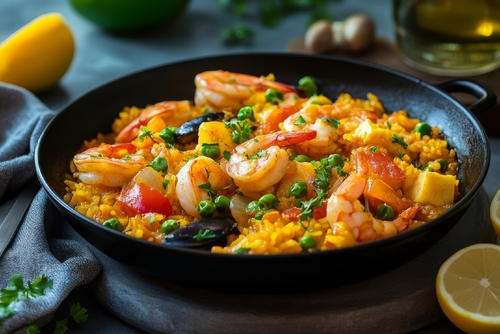
Picture a sunny Spanish afternoon: friends gathered outdoors, socializing, with a huge pan of sizzling rice in the middle of the table. That’s paella. Traditionally made with rabbit, chicken, and saffron-flavored rice, it’s evolved into a variety of versions distinct to different parts of the country.
Paella is Spain’s national dish and a symbol of togetherness. It’s all about sharing a traditional favorite over conversations that last for hours.
United Kingdom: Fish and chips
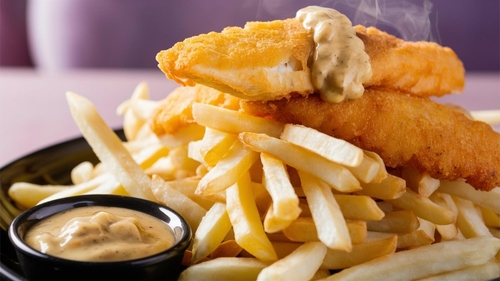
Sometimes, comfort comes wrapped in greaseproof paper. Fish and chips is Great Britain’s unofficial love language that features crispy cod, chunky fries, a sprinkle of salt, and a splash of vinegar. Born during the Industrial Revolution, it quickly became a working-class staple and a national treasure.
For Britons abroad, there’s nothing like finding a proper “chippie.” One bite and you’re instantly transported to the English seaside, watching the waves and dodging the seagulls.
Eastern Europe: rich, cozy, and full of heart
Eastern Europe’s dishes are like warm hugs on cold days: simple, filling, comforting, and made to bring people together.
Poland: Pierogi
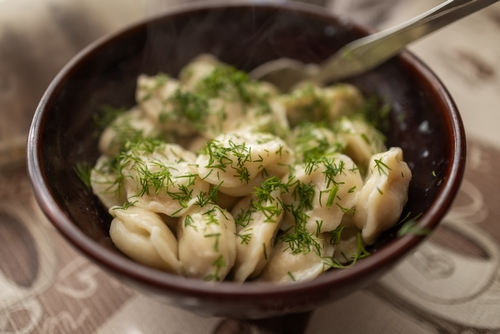
Pierogi are tiny pockets of joy. These dumplings, stuffed with mashed potato, cheese, mushrooms, or even fruit, are comfort food at its best. Every Polish family has its own secret recipe, often shared at Christmas or other big celebrations.
Making pierogi is a messy and fun family affair. One person rolls the dough, another fills it, and someone else seals the finished dumpling.
Hungary: Goulash
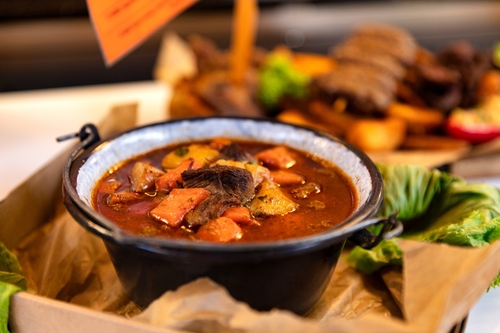
Rich, smoky, and spiced with paprika, goulash is the essence of Hungary in a bowl. Once a shepherd’s stew, it’s now a national symbol of warmth and resilience. Each spoonful warms you up, with hearty beef, soft potatoes, and that signature red hue from paprika famously grown in Hungarian fields.
Ukraine: Borscht

Vibrant and full of soul, borscht is Ukraine’s culinary symbol of comfort. This ruby-red soup is made with beets, cabbage, potatoes, and often a touch of meat. It’s served hot or cold, but always with a generous dollop of sour cream and a side of crusty bread.
East Asia: precision, art, and a whole lot of flavor
In East Asia, cooking is a craft. Every movement, every ingredient, every flavor has purpose, and that’s what makes the cuisine so extraordinary.
Japan: Curry rice

Rich and full of flavor, Japanese curry rice (kare raisu) is the country’s ultimate comfort food. Unlike the fiery curries of South Asia, Japan’s version is mild, slightly sweet, and thick enough to hug every grain of rice.
Originally introduced through trade in the late 1800s, Japanese curry has become a staple in many households. It’s the kind of dish that makes you think of home, no matter where in the world you are.
South Korea: Kimchi
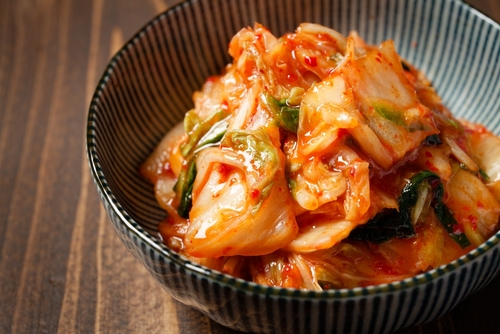
Kimchi is a cultural icon that’s managed to transcend borders. Made from fermented cabbage, radish, and chili, it’s tangy, spicy, and addictive. Every Korean family has its own version, often made together during Kimjang, the annual kimchi-making season.
Kimchi, alongside other national favorites like bibimbap, is proof that good things take time and that flavor only deepens when shared.
China: Peking duck

Crispy on the outside but juicy on the inside, Peking duck is Chinese cuisine at its finest. Once a royal delicacy, it’s now well-loved across the world.
Each duck is air-dried, glazed, and roasted until the skin crackles, then sliced thin and wrapped with scallions and hoisin sauce.
South and West Asia: spice and soul in every bite
In this part of the world, food is a celebration. The kitchens are alive with the scent of spices, the sound of laughter, and recipes that have been passed down through generations.
India: Khichdi
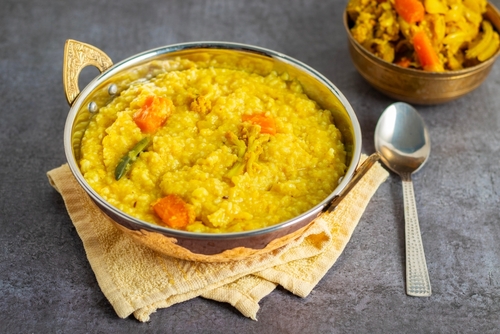
If India had a culinary personality, it would be biryani and khichdi. One’s grand and festive, featuring layered rice and meat cooked with saffron. The other is a humble and soothing mix of rice and lentils cooked to creamy perfection.
Together, they capture India’s love for balance: spice and calm, celebration and comfort.
Pakistan: Nihari
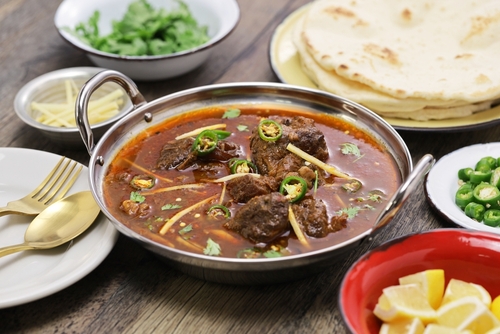
On the other side of the border, nihari is the breakfast of champions in Pakistan. Traditionally served on weekends, it’s made by simmering meat overnight until it’s tender enough to fall apart. Served with naan and lemon wedges, it’s indulgence done right. The aroma alone could wake up a neighborhood.
Sri Lanka: Rice and curry
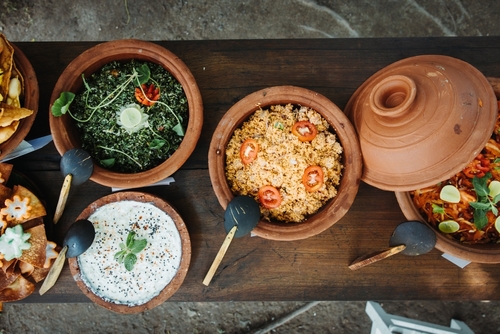
Sri Lankan rice and curry is a whole experience. A generous mound of rice is surrounded by small portions of curries made from vegetables, lentils, meat, or fish, each one layered with the flavors of coconut milk, chili, and fragrant spices.
Every household has its own take on this classic, often influenced by regional ingredients and family traditions. The dish balances fiery heat with creamy textures and a hint of sweetness, all coming together on one plate.
The Middle East: generosity served on every plate
In the Middle East, food equals love. Meals are meant to be shared, and guests are treated like family from the moment they sit down.
Lebanon: Kibbeh
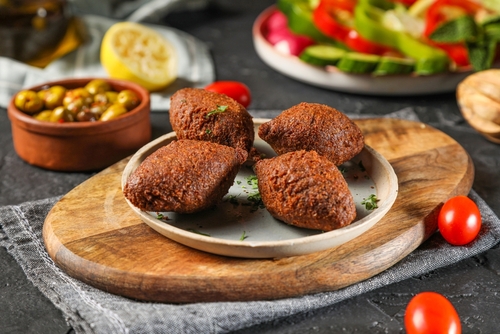
A perfect mix of bulgur, minced meat, and spices, kibbeh is Lebanon’s pride. It’s earthy, fragrant, and often made for special occasions. Whether fried, baked, or served raw, kibbeh is proof that simplicity can be stunning.
Turkey: Döner kebab
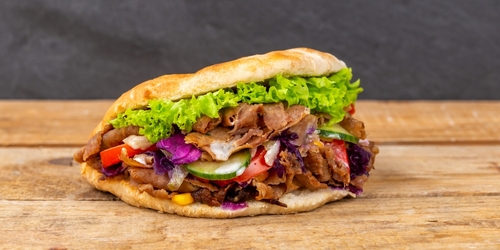
Stacked high and slow-roasted to perfection, döner kebab has become a global sensation. In Turkey, it’s a flavorful and beloved snack consisting of meat sliced thin, wrapped in bread, and drizzled with sauce. It’s fast food done with heart.
North Africa: aromas from the spice routes
North Africa invites you to enjoy meals with all your senses—a swirl of spice, a burst of color, and the warmth of a meal made to bring people together.
Morocco: Couscous

Soft grains of semolina steamed and topped with vegetables and meat, couscous is Morocco’s comfort dish. It’s commonly eaten on Fridays, shared by families around one big plate to symbolize unity.
The best couscous is always made by hand, with time, care, and patience. Every bite carries the scent of saffron and cinnamon. These flavors trace back to a rich history of trade routes, family kitchens, and centuries of tradition.
Egypt: Koshary

Koshary is both unconventional and comforting at the same time. This street food favorite mixes rice, lentils, pasta, chickpeas, and crispy onions, all topped with spicy tomato sauce. It’s messy in the best way possible, plus absolutely delicious. The clatter of steaming pots from street vendors makes koshary more than just food; it’s a snapshot of Cairo’s energy and spirit.
Sub-Saharan Africa: celebration in every spoonful
In Sub-Saharan Africa, food is all about community. Dishes are bold and made to feed a crowd.
Nigeria: Jollof rice
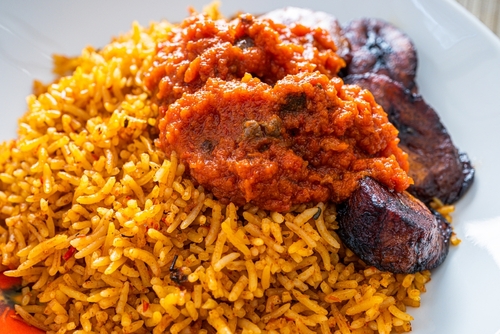
Jollof rice is West Africa’s most beloved dish, and each country claims its version is the best. It’s made for celebrations, helping the joyful, communal atmosphere come to life. The scent of jollof rice cooking signals to neighborhoods that it’s time to come together during weddings, holidays, and Sunday gatherings.
Ghana: Fufu
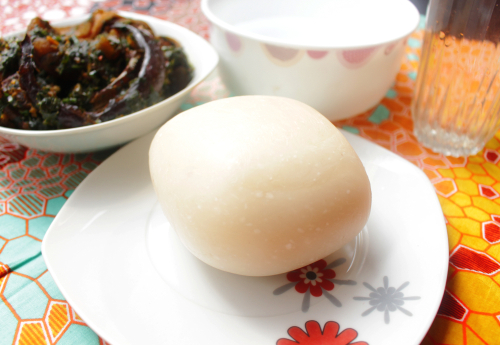
An endlessly comforting dish, fufu is made from mashed cassava or yams and served with rich soup or stew. It’s the kind of food that brings everyone to the table. The rhythmic pounding during the preparation process shows that dinner is almost ready in villages and cities alike.
South Africa: Bobotie
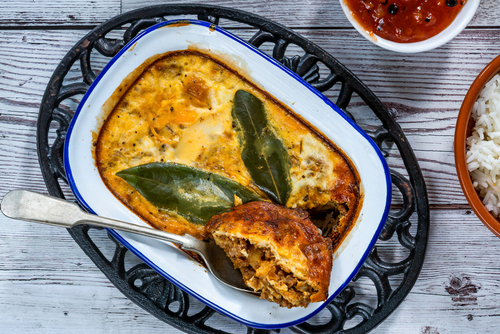
Sweet, savory, and fragrant with curry and raisins, bobotie is South Africa’s national casserole. It’s comfort food that reflects the country’s mix of Dutch, Malay, and African influences. The golden topping, rich with egg custard, browns perfectly in the oven.
North America: comfort food, culture, and creativity
North America’s food is where global flavors meet local flair, and traditional home cooking gets a modern twist.
United States: Hamburger

While the US doesn’t have a single, distinct national dish, the hamburger is a classic that’s beloved worldwide. The smell of sizzling beef and toasting buns brings back memories of summer cookouts and late-night road trips. Every region has its own spin on this classic recipe, from California’s avocado-topped versions to the South’s smoky barbecue styles.
Canada: Poutine

Crispy fries, cheese curds, and hot gravy, poutine is Canada’s cozy masterpiece. It’s messy, indulgent, and impossible not to love.
First created in rural Quebec, poutine is now found everywhere, from food trucks to five-star restaurants. There’s something deeply comforting about a dish that doesn’t take itself too seriously.
Mexico: Mole poblano
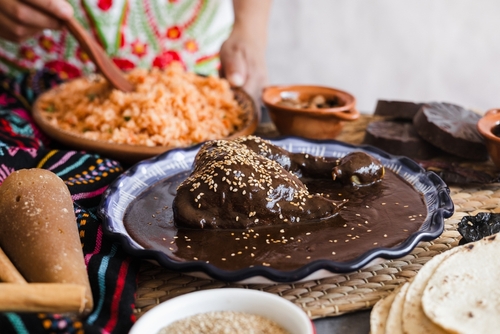
Served over chicken or turkey, mole poblano is the soul of Mexican celebration food. It blends chili peppers, chocolate, and over 20 spices. The recipe is said to date back centuries, born in Puebla’s convent kitchens, where nuns combined indigenous and European ingredients to create something extraordinary.
South America: fire, flavor, and feasting together
South American food is characterized by its vibrancy and social nature. It’s about laughter that carries into the night and recipes that have been perfected around the family table for generations.
Argentina: Asado

Asado is a slow-cooked barbecue feast where friends gather for hours. Every asador (grill master) takes pride in their technique, from the cut of beef to the timing of each turn. The result is a social ritual that captures the heart of Argentine hospitality and tradition.
Peru: Ceviche

Fresh fish marinated in lime and chili, ceviche is bright and refreshing. Each bite hits the perfect balance of tang, spice, and freshness. It’s a direct reflection of Peru’s diverse landscapes, including the ocean, mountains, and jungle. Served cold, it’s the kind of dish that wakes up your senses.
Brazil: Feijoada

Feijoada, a thick black bean stew with pork, is Brazil’s Sunday ritual. It’s comforting and meant to be shared over laughter and samba music.
The dish traces its roots back to Brazil’s past, where humble ingredients were transformed into something extraordinary. Today, it’s a national treasure served with rice, orange slices, and farofa, and always enjoyed slowly.
The Caribbean: spice, rhythm, and sunshine
The Caribbean’s food is as joyful as its music. It’s where African, Indigenous, and European influences create a special and unique blend.
Jamaica: Jerk chicken
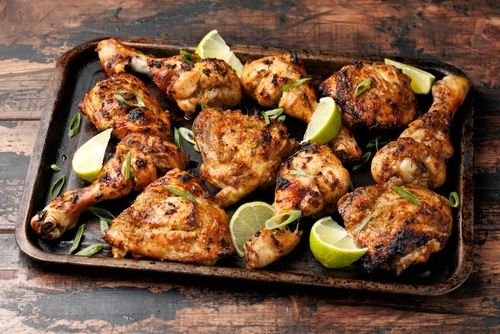
Marinated in Scotch bonnet peppers and allspice and grilled over wood fire, jerk chicken is bold and unforgettable. This dish represents Jamaica’s heartbeat. Whether eaten from a roadside stand or at a family cookout, it captures the island’s fiery spirit and love of life in every bite.
Cuba: Ropa vieja

Tender shredded beef simmered in tomato sauce, ropa vieja is Cuba’s favorite dish. The slow cooking turns simple ingredients into something deeply satisfying, with peppers, onions, and garlic coming together in perfect harmony. Every Cuban household has its own version, but all agree that ropa vieja is a dish that tastes like home.
Oceania: fresh, simple, and straight from the earth
Oceania celebrates nature in every bite. Meals here reflect the landscape itself: clean, natural, and deeply connected to the land and sea.
Australia: Roast lamb

If there’s one dish that feels like home to Australians, it’s roast lamb. Tender, golden, and infused with rosemary and garlic, it’s the centerpiece of countless weekend lunches across the country. It’s a meal that brings together friends, family, and anyone lucky enough to drop by.
New Zealand: Hāngi

A traditional Māori feast cooked underground, hāngi is food infused with earth and smoke. It’s about connection to nature, community, and history. Dishes usually consist of meat, vegetables, and root crops, wrapped, placed in a pit oven, and left to slow-cook for hours.
A taste of home, wherever you are
National dishes are edible stories, passed down through generations and carried across borders. For immigrants, they’re a taste of home, and for travelers, they’re a window into a culture’s heart.
So next time you cook or explore a new restaurant, take a little culinary adventure into the local cuisine. Try something you’ve never had before or recreate a dish that reminds you of where you come from. Because in the end, food connects us all, one delicious bite at a time.
FAQs
What’s the difference between a national dish and a popular dish?
A national dish holds cultural significance and often represents identity or pride, while a popular dish might simply be widely enjoyed.
Why is it important to try national dishes when traveling?
National dishes offer an authentic taste of a country’s culture, history, and community. It’s one of the most genuine ways to connect with local people and traditions.
Can I make national dishes from around the world at home?
Yes. With international markets and online recipes, it’s easier than ever to recreate these iconic meals in your own kitchen.
Explore More National Dishes
These dishes are represented with full recipes, history, and photos at each link.
156 Dishes from Different Countries: List with Links
| Country | National Dish |
|---|---|
| Afghanistan | Kabuli Palao |
| Albania | Tavë Kosi |
| Algeria | Couscous |
| Angola | Muamba de Galinha |
| Antigua and Barbuda | Fungee and Pepperpot |
| Argentina | Asado |
| Armenia | Khorovats |
| Australia | Vegemite on Toast |
| Austria | Wiener Schnitzel |
| Bahamas | Conch Salad |
| Bahrain | Machboos |
| Bangladesh | Hilsa Fish |
| Barbados | Cou-Cou and Flying Fish |
| Belgium | Belgian Waffles |
| Belize | Rice and Beans |
| Benin | Pâte de Maïs |
| Bhutan | Ema Datshi |
| Bolivia | Salteñas |
| Bosnia and Herzegovina | Cevapi |
| Brazil | Feijoada |
| Brunei | Ambuyat |
| Burkina Faso | Fufu |
| Burundi | Ibiharage |
| Cameroon | Ndole |
| Canada | Poutine |
| Cape Verde | Cachupa |
| Central African Republic | Muamba |
| Chad | Boule |
| Chile | Empanadas |
| China | Peking Duck |
| Comoros | Langouste a la Vanille |
| Congo | Kwanga |
| Costa Rica | Gallo Pinto |
| Croatia | Peka |
| Cyprus | Meze |
| Czech Republic | Svíčková |
| Democratic Republic of the Congo | Kwanga |
| Denmark | Smørrebrød |
| Djibouti | Skoudehkaris |
| Dominican Republic | Sancocho |
| Ecuador | Fanesca |
| Egypt | Koshari |
| El Salvador | Pupusa |
| Equatorial Guinea | Chicken Muamba |
| Estonia | Verivorst |
| Eswatini (Swaziland) | Emasi Emabele |
| Ethiopia | Injera |
| Fiji | Kokoda |
| Finland | Karjalanpiirakka |
| France | Escargots de Bourgogne |
| Gabon | Nyembwe Chicken |
| Gambia | Domoda |
| Germany | Sauerkraut and Sausages |
| Ghana | Jollof Rice |
| Guatemala | Pepián |
| Guinea-Bissau | Jollof Rice |
| Guyana | Pepperpot |
| Haiti | Griot |
| Honduras | Baleada |
| Hungary | Goulash |
| Iceland | Hangikjöt |
| India | Biryani |
| Iraq | Tepsi Baytinijan |
| Ireland | Irish Stew |
| Israel | Falafel |
| Italy | Pizza |
| Jamaica | Ackee and Saltfish |
| Japan | Sushi |
| Jordan | Mansaf |
| Kazakhstan | Beshbarmak |
| Kenya | Ugali |
| Kiribati | Palusami |
| Kosovo | Flija |
| Kuwait | Machboos |
| Kyrgyzstan | Beshbarmak |
| Laos | Larb |
| Latvia | Grey Peas and Bacon |
| Lebanon | Kibbeh |
| Liberia | Jollof Rice |
| Libya | Couscous |
| Lithuania | Cepelinai |
| Luxembourg | Judd mat Gaardebounen |
| Madagascar | Romazava |
| Malawi | Nsima |
| Mauritius | Dholl Puri |
| Mexico | Tacos |
| Micronesia | Chicken Kelaguen |
| Moldova | Mămăligă |
| Monaco | Barbagiuan |
| Mongolia | Buuz |
| Montenegro | Njeguški Pršut |
| Morocco | Couscous |
| Mozambique | Piri Piri Chicken |
| Myanmar (Burma) | Mohinga |
| Nepal | Dal Bhat |
| New Zealand | Hangi |
| Nicaragua | Gallo Pinto |
| Nigeria | Jollof Rice |
| North Korea | Kimchi |
| Norway | Rakfisk |
| Oman | Shuwa |
| Pakistan | Biryani |
| Panama | Sancocho |
| Papua New Guinea | Mumu |
| Paraguay | Sopa Paraguaya |
| Peru | Ceviche |
| Philippines | Adobo |
| Poland | Pierogi |
| Portugal | Bacalhau à Gomes de Sá |
| Qatar | Machbūs |
| Romania | Sarmale |
| Russia | Borscht |
| Samoa | Palusami |
| San Marino | Torta Tre Monti |
| Sao Tome and Principe | Calulu |
| Saudi Arabia | Kabsa |
| Senegal | Thieboudienne |
| Serbia | Ćevapi |
| Seychelles | Curry |
| Sierra Leone | Jollof Rice |
| Singapore | Hainanese Chicken Rice |
| Slovakia | Bryndzové Halušky |
| Slovenia | Potica |
| South Africa | Bobotie |
| South Korea | Bibimbap |
| Spain | Paella |
| Sri Lanka | Rice and Curry |
| Sudan | Ful Medames |
| Suriname | Roti |
| Sweden | Köttbullar |
| Switzerland | Fondue |
| Syria | Kibbeh |
| Tajikistan | Plov |
| Tanzania | Ugali |
| Thailand | Pad Thai |
| Togo | Fufu |
| Tonga | Lu Pulu |
| Trinidad and Tobago | Doubles |
| Tunisia | Couscous |
| Turkey | Kebab |
| Turkmenistan | Palaw |
| Tuvalu | Palusami |
| Ukraine | Borscht |
| United Arab Emirates | Machboos |
| United Kingdom | Fish and Chips |
| United States | Hamburger |
| Uruguay | Asado |
| Uzbekistan | Plov |
| Vanuatu | Lap Lap |
| Venezuela | Pabellón Criollo |
| Vietnam | Phở |
| Yemen | Saltah |
| Zambia | Nshima |
| Zimbabwe | Sadza |

